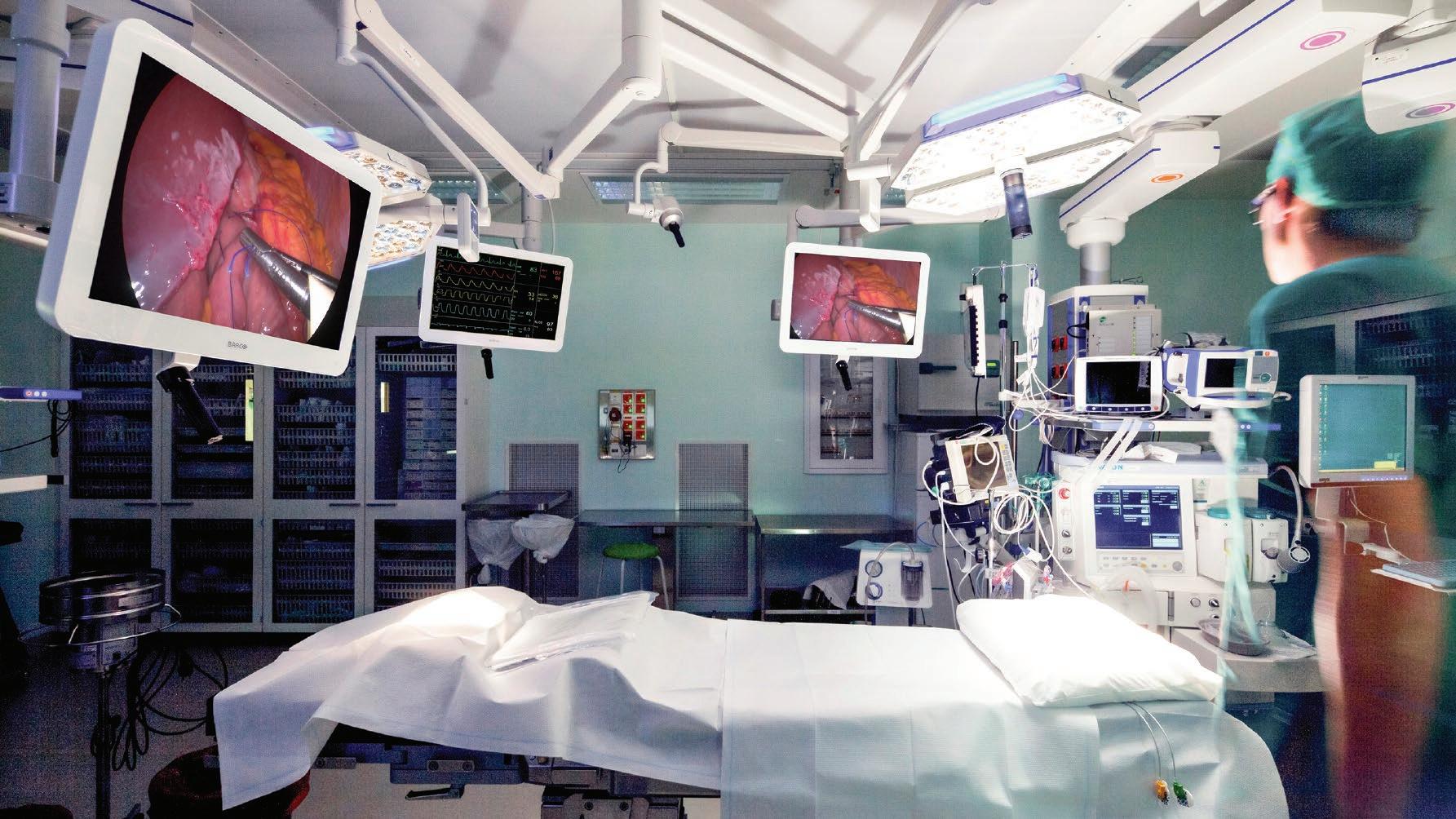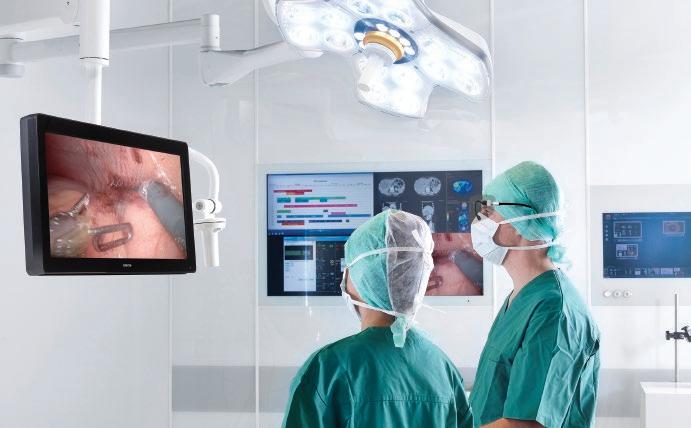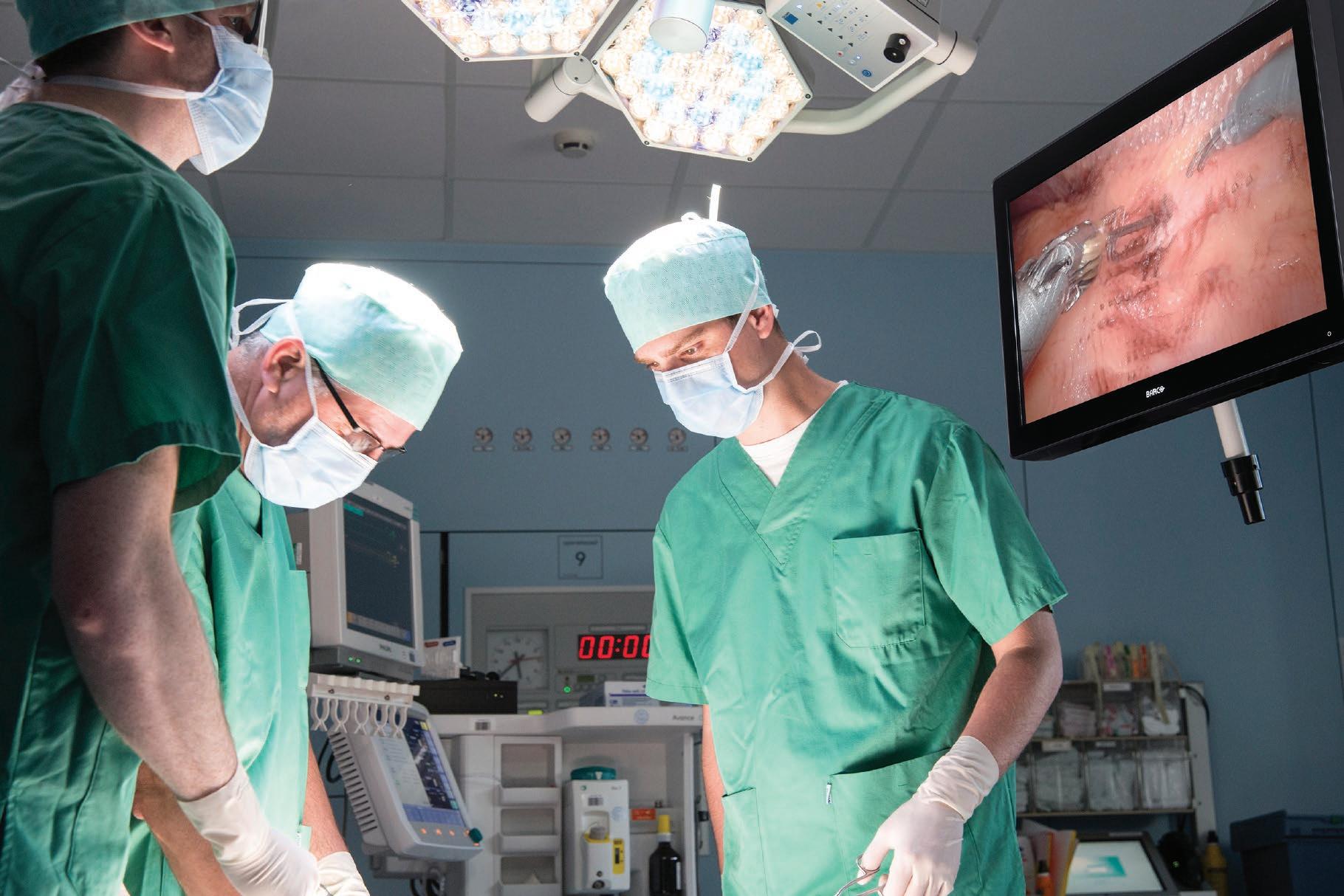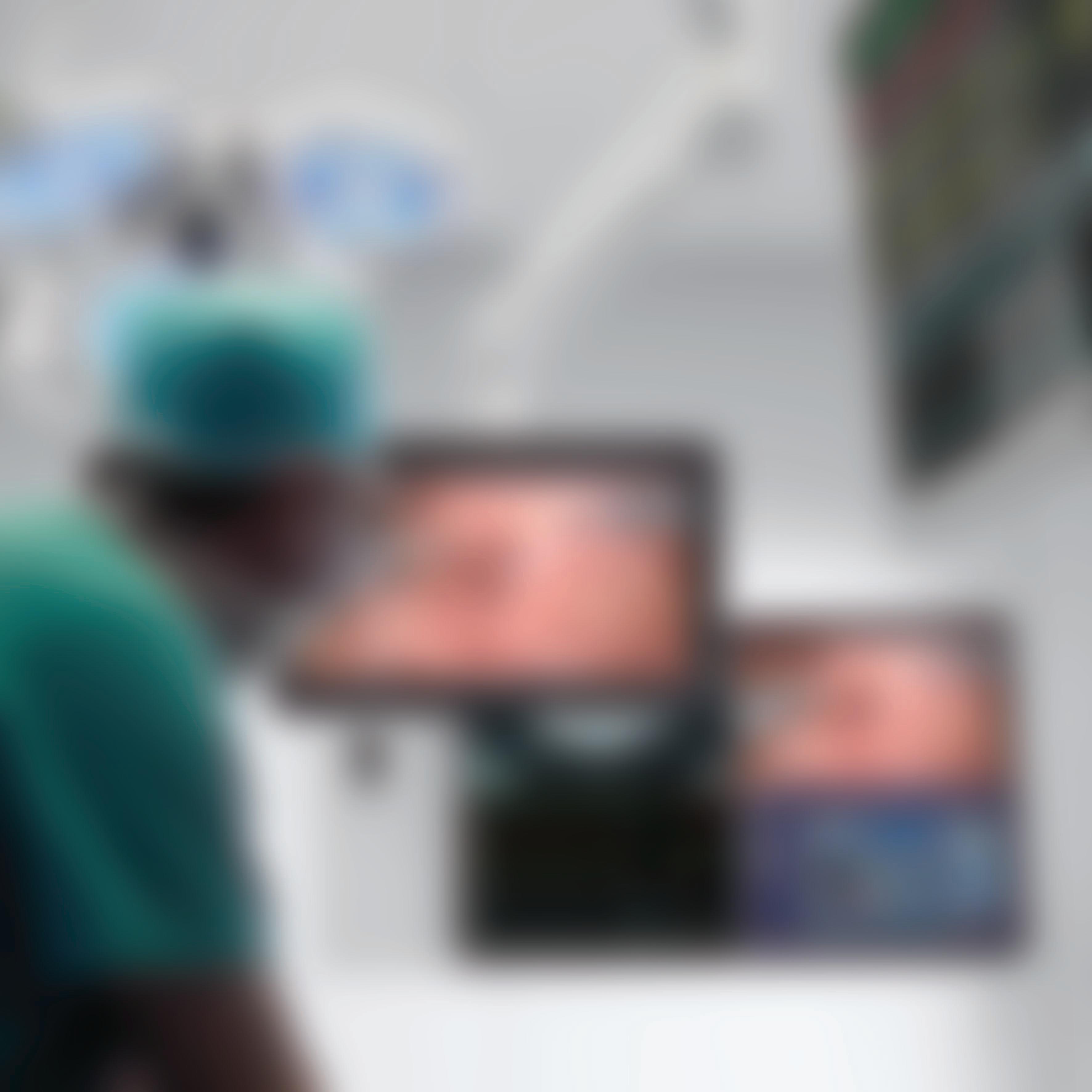IMPROVING OPERATING ROOM EFFICIENCY AND THE ROLE OF DIGITAL TECHNOLOGY
Minimally Invasive: Maximum Organisation John Hancock, Editor To ensure a smooth and efficient surgery process requires a manageable and well-managed operating theatre
3D simulation also makes planning for surgery easier and more accurate. Being able to measure a patient’s soft tissue can help surgeons better understand both the problems they face and how to fix them
Minimally invasive surgery (MIS) is gaining traction in the healthcare sector. British Journal of Family Medicine’s25 reported on Southend University Hospital’s ‘Colin George Laparoscopic Theatre’ where Mr Mike Dworkin, Consultant Surgeon said: “Many of these patients would have previously had to have ‘open’ surgery’ which would have meant longer hospital stays and recovery times, and greater post-operative pain and scarring. The great news for patients is we have now got faster set up times for surgery and quicker change over between cases and have the equipment to carry out on table colonoscopy, which will make cancer surgery more accurate.” But, whereas with open surgery, the surgeon can see the work site in real life, with MIS they have to rely on pre-operative planning and images of the operation area. In the preceding articles we’ve looked at the operating theatre from a human and a technology point of view but all factors need to be managed and improved in order to ensure effectiveness in operating theatres and the work undertaken in them.
Advanced Digital Solutions as Aids to Efficiency and Productivity Efficiency is a very important topic at the top of every healthcare provider’s agenda these days but a more efficient process cannot be traded for quality. BMJ, ‘Improving theatre turnaround time’26 reported, “The NHS Institute for Innovation and Improvement has determined that a £7 million saving can be achieved per trust by improving theatre efficiency. The aim of this quality improvement project was to improve orthopaedic theatre turnaround without compromising the patient safety.” As well as theatre efficiency, it is also possible to improve surgeon efficiency by adding to their armoury in the matter of pre-operative planning; a great asset in that has been the introduction of 3D imaging. As MirrorMe27 explains, “3D simulation also makes planning for surgery easier and more accurate. Being able to measure a patient’s soft 14 | WWW.HOSPITALREPORTS.EU
tissue can help surgeons better understand both the problems they face and how to fix them… Surgeons are now able to better plan surgical procedures, more accurately achieve desired outcomes, and increase trust with their patients.” That works well for planning but the actual procedure will be a more dynamic affair in which the surgeon might well need access to real time images, known as intraoperative images. Science Direct28 explains, “Although diagnostic imaging systems designed for use in diagnosis and treatment planning are often used intraoperatively, the requirements for intraoperative imaging are rather different. Whereas the main requirement for most diagnostic systems is image quality, the overriding requirement for intraoperative imaging is timeliness. Although quality is still important, a perfect image obtained some hours (or even several minutes) after it is taken is not so useful in an operating room setting. Generally, one needs the images to provide sufficient information for positioning an instrument relative to target anatomy or monitoring an interventional process within acceptable latencies that may range from fractions of seconds to a few minutes, depending on the particular task.”
Advanced Digital Solutions as Aids to Accuracy and Quality What will most interest patients is how well the operation deals with their needs. The greater precision with which a surgeon can work, the more effective will be the outcome. MedStar Franklin Square Medical Center29 confirms the efficacy of minimally invasive surgery (MIS), “Minimally invasive surgery also offers a higher accuracy rate compared to traditional open surgery. Accuracy is improved because procedures use a camera, allowing the surgeon to have a better visualization of your internal organs.” Among the issues related to minimally invasive surgery cited by The Hamlyn Centre for Robotic Surgery, Imperial College London30 include, “… the limited field of view; reduced manoeuvrability of the tools; lack of haptic feedback; loss of depth






